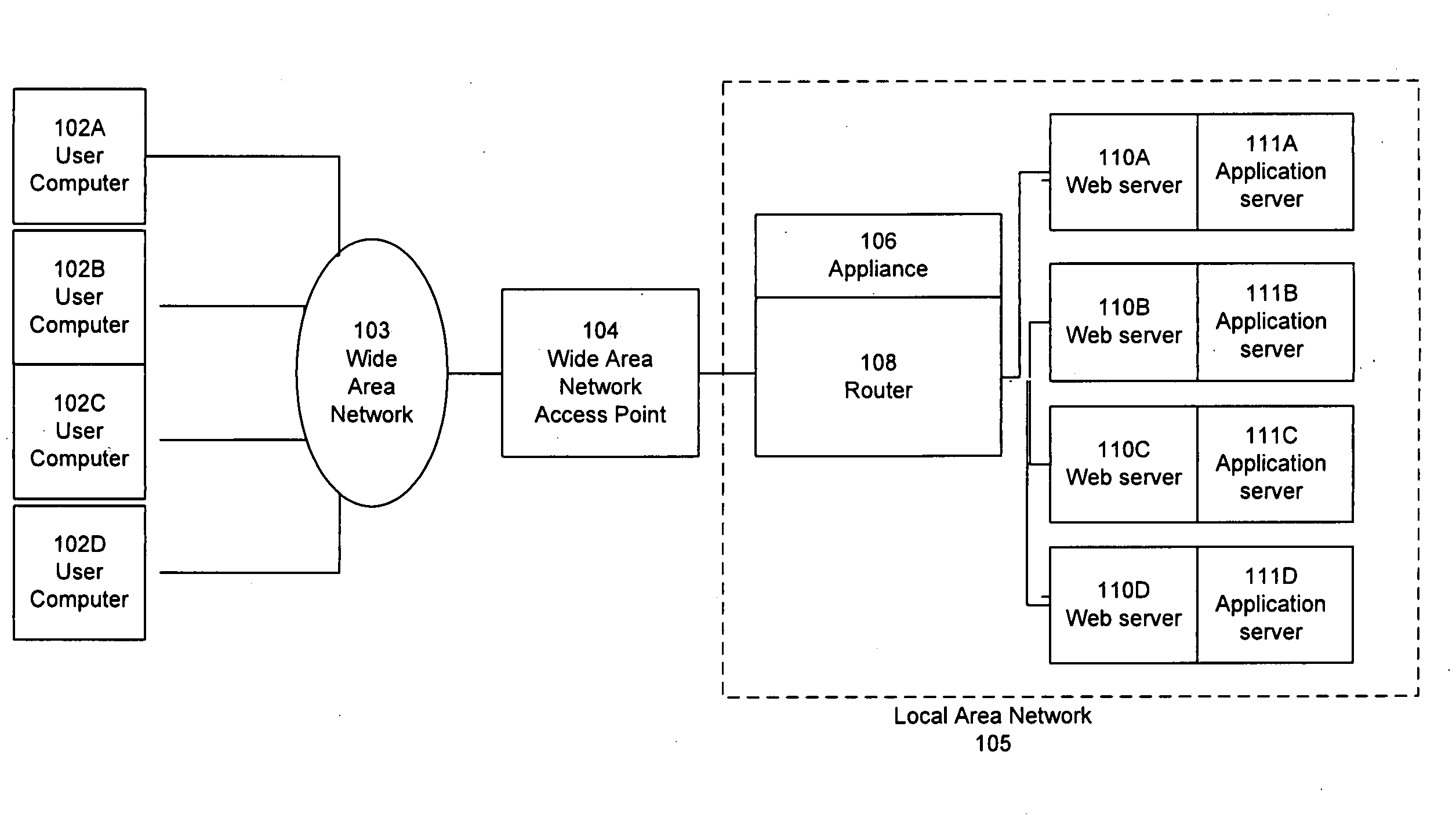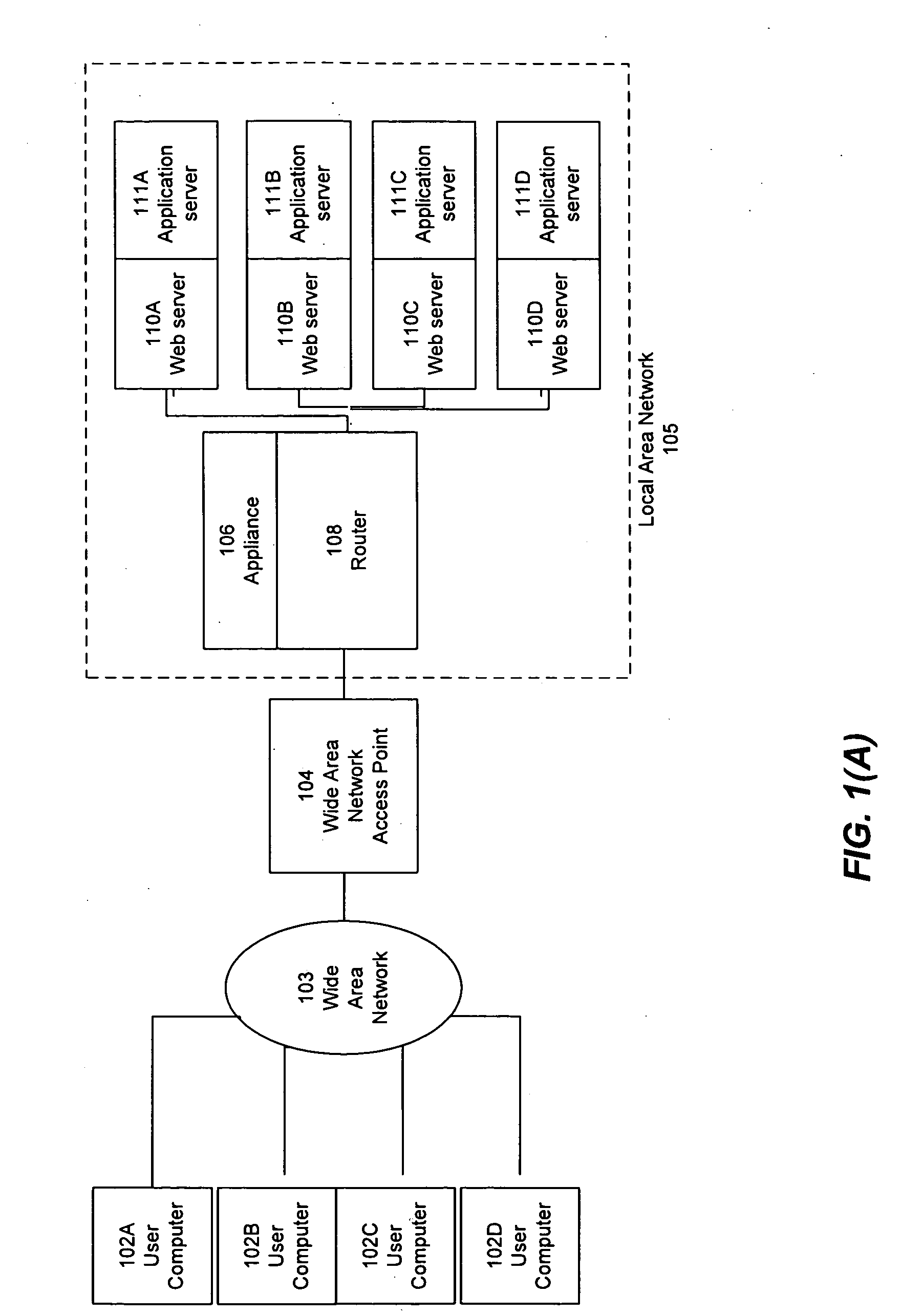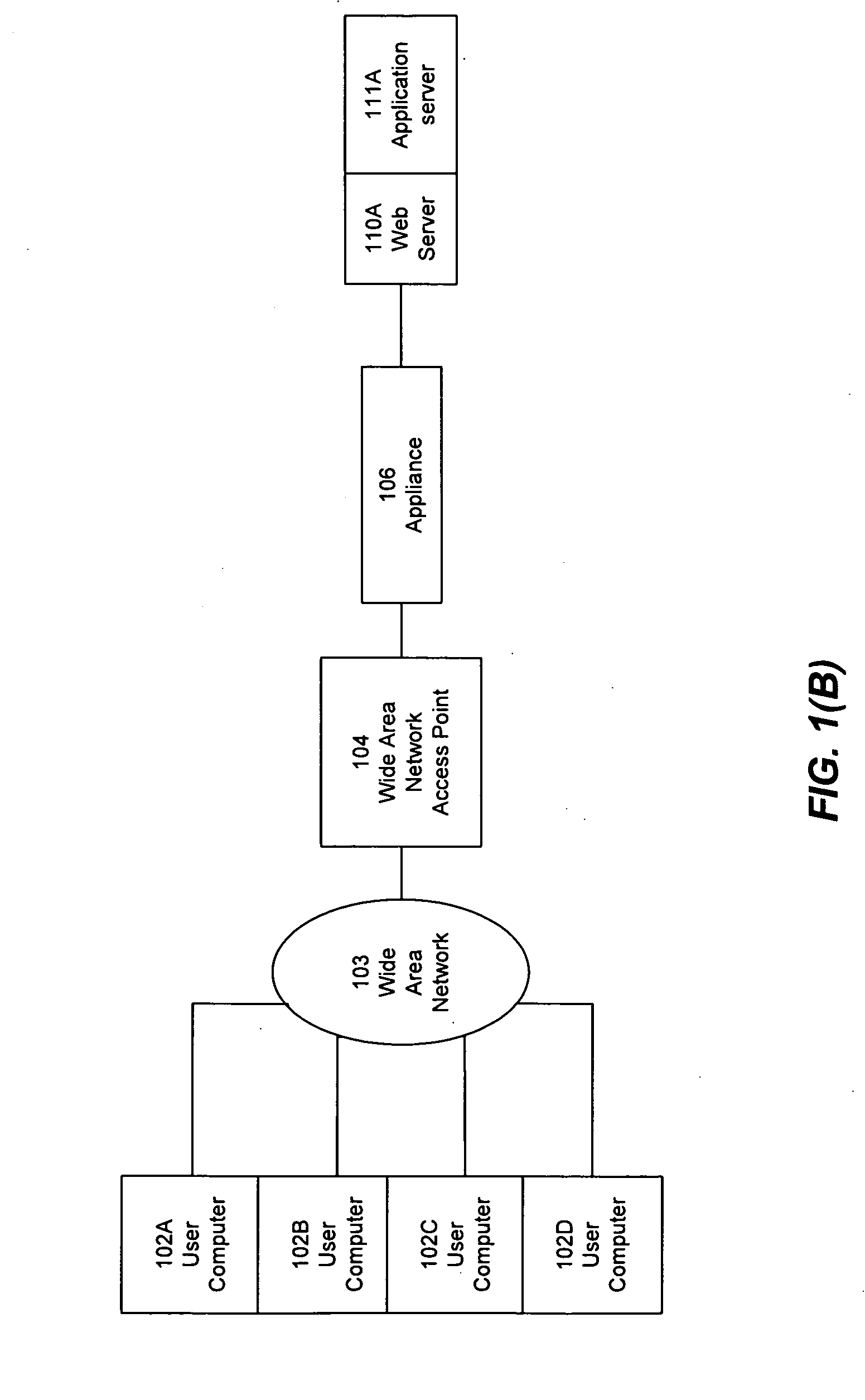Partial Content Caching
a content cache and content technology, applied in the direction of memory address/allocation/relocation, instruments, transmission, etc., can solve the problems of client-based cache presenting a burden to the client, client-based cache may also present a security risk, client-based cache may not always be available, etc., to achieve the effect of improving the caching capability
- Summary
- Abstract
- Description
- Claims
- Application Information
AI Technical Summary
Benefits of technology
Problems solved by technology
Method used
Image
Examples
Embodiment Construction
Architecture
[0033]Embodiments of the present invention are now described with reference to the figures where like reference numbers indicate identical or functionally similar elements.
[0034]According to one embodiment of the present invention, the appliance is located in-line, i.e., within the data path between the user computer and the web server, so that the system of the present invention has the opportunity to intercept messages from the user computer to the web server and from the web server to the user computer.
[0035]For the purposes of illustration, the term “user computer” will be employed throughout this disclosure to refer to any electronic device capable of sending and receiving messages on a network. A non-exhaustive list of examples of user computers includes personal computers, enterprise computing systems, cell phones, handheld devices, personal digital assistants (PDAs), gaming consoles, and portable entertainment systems. One skilled in the art will recognize that a...
PUM
 Login to View More
Login to View More Abstract
Description
Claims
Application Information
 Login to View More
Login to View More - R&D
- Intellectual Property
- Life Sciences
- Materials
- Tech Scout
- Unparalleled Data Quality
- Higher Quality Content
- 60% Fewer Hallucinations
Browse by: Latest US Patents, China's latest patents, Technical Efficacy Thesaurus, Application Domain, Technology Topic, Popular Technical Reports.
© 2025 PatSnap. All rights reserved.Legal|Privacy policy|Modern Slavery Act Transparency Statement|Sitemap|About US| Contact US: help@patsnap.com



